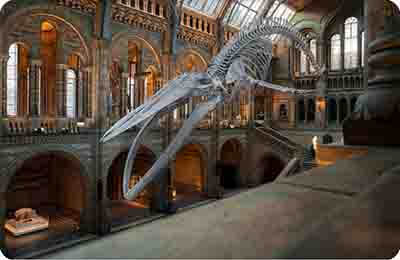博物馆之岛:岱山
时间:2022-09-24 02:10:34

浮现在浩瀚烟波中的岱山岛,是东海的一颗明珠,岛上物产丰富,风光旖旎,一直受到人们的青睐。近年来,又由于这个岛十分重视弘扬海洋文化,建立了一个个独特的海洋博物馆,因而更引起了国内外新闻媒体的关注。许多海内外媒体都将岱山的海洋博物馆作为新闻中的一个亮点,中央电视台、凤凰卫视、人民日报、新华网、香港文汇报、香港大公报等对岱山海洋博物馆的报道总量已达数百篇之多,其中浙江卫视在“浙江告诉你”海外栏目,以“感受海洋博物馆”为主题,对岱山海洋文化进行深度报道,凤凰卫视北美台、凤凰卫视欧洲台、澳大利亚悉尼中文台、新西兰金水滴电视台、法国5台、美国斯克拉卫星电视网、加拿大城市电视台等七家海外电视机构也在黄金时段播出有关浙江岱山海洋博物馆的节目,引起轰动。
岱山已经建成和正在筹建的博物馆已达10座之多,且创意独到,填补了中国博物馆文化的系列空白。
中国台风博物馆
中国台风博物馆坐落在岱山燕窝景区拷门大坝北端,是一座海船形的白色建筑。进了大门,便见7个名叫沙漏、尖顶草帽、圆球、T字形、筐子、正方体、十字架的竹编器具挂在竹竿上,这是“暴风警报风球”。大厅里巨大的台风卫星云图中,可见黑洞似的台风眼,在观台厅则可见玻璃外面大海的惊涛骇浪。这座博物馆除了已陈列的650余幅图片资料和57件实物外,还配置了一套先进的全自动海洋环境远程观测传输系统,为全省有效指挥防台抗台工作提供可靠数据。
眼下台风博物馆二期4D动感影院项目已初具规模,它将整合各种高科技手段,艺术化地打造4D动感影院和仿真模拟系统,以参与性、互动性手法,让游客身临其境地感受、体验台风的凶、险、奇,同时推出观浪游项目。
在台风博物馆的基础上,这座馆还将建造一个总面积达3000亩、以“台风”为核心的风文化乐园,凸现风科学、风文化、风娱乐、风景观,形成风休闲,发展风经济。规划经过3年至5年,初步建成国内一流、国际领先的灾难体验性海洋文化休闲旅游胜地,这也是岱山县开全国灾难旅游之先河的一个创举。
中国海洋渔业博物馆
中国海洋渔业博物馆由一座四合院民居古宅按照原貌修缮而成,占地1200平方米,展厅面积900平方米。馆内设渔史室、船模室、网具室、鱼类标本室及渔俗风情室等,融历史、渔业、文化、旅游于一体,充分展示了岱山渔民原汁原味的渔文化风貌。
这家博物馆展厅的陈列突出以海洋捕捞为主题,展示了舟山海洋渔业百余年来发展史,它运用海洋生物剥制标本,陈列了大型生物骼骨、鱼类浸制标本以及各种类贝、藻类等海洋生物,编织出五彩缤纷的海洋世界;运用船具、船模、渔网等实物,展示舟山海洋渔业史及近代渔业捕捞知识;此外,还陈列渔行的水票、账簿、木秤等工具及渔商、渔民生活用品等,让观众充分了解渔民生活的变化。在鱼类标本室陈列的一条长达5.3米的须鲸下颌骨,可以推测这条须鲸体长达25米以上;还有一条长3米、宽0.29米的带鱼标本,也是令人称奇;贝壳室是个五光十色的世界:形态奇特、色彩艳丽的世界四大名螺唐冠螺、万宝螺、大法螺、鹦鹉螺齐集于一室,那长达96厘米的蛇螺和巨大的砗磲,让人目不暇接,啧啧称奇!
中国岛礁博物馆
岱山共有404个岛屿和126个海礁,是全国岛礁最多、最集中的海岛县。为了保护无居民海岛及其海洋生态系统,重点保护原生态岛礁、经济价值较大的海洋渔业资源、海滩岩、野生河麂、野生柃木、自然景观与历史遗迹等,岱山县启动了东部岛礁海洋特别保护区建设工程,其中就包括建设“中国岛礁博物馆”。
东部岛礁海洋特别保护区总面积为420平方公里,在这个保护区内,共有面积大于500平方米的大小岛屿134个、海礁69个。根据规划布局,岱山东部岛礁海洋特别保护区分为10个功能区,除了“中国岛礁博物馆”外,还有“海洋生态及岛礁资源保护区”、“岱衢洋渔业资源增殖保护区”、“小沙河海滩岩自然保护区”、“珍稀与濒危动物保护区”、“大长涂海洋生态渔业开发区”、“海岛生态旅游景观区”、“海上休闲渔业区”、“渔业生产基地功能区”、“海岛生态农牧基地功能区”。
中国岛礁博物馆的建设理念、经营特色与岱山县其他已建或规划建设的海洋博物馆不同,它将整个海洋特别保护区广阔海域作为中国岛礁博物馆的天然舞台,建成一个开放式的露天式的岛礁自然博物馆。博物馆利用岱山东部岛礁区内类型各异的海岛、海礁以及丰富多彩的海岛海洋资源进行适当分类和整合,开发游艇观光、海上垂钓、荒岛探险、海上娱乐等项目,将海上观光、海岛保护与海洋科普有机结合起来,获得了良好的社会效益、生态效益和经济效益。
中国盐业博物馆
去年7月开馆的中国盐业博物馆,坐落在岱山县岱西万亩盐场上。它以盐田为依托,以“贡盐”之乡为文化背景,将盐业博物馆的外形建得像盐的结晶状似的。在博物馆前,立着宋代著名词人柳永的塑像,因为他在当时曾写了一首著名的《煮海歌》:“煮渔之民何所营,妇无蚕织夫无耕,衣食之源太寥落,牢盆煮就汝输征……”。展厅里陈列着从“煎煮”、“板晒”、“滩晒”工艺演变过程中的各种盐业工具和图片、实物,并展示盐史中最有代表性的快速制盐场景,以让参观者能自己操作、亲身经历晒盐的全过程。
这里还可以观看用盐雕琢成的活泼可爱的各种动物、各种童话人物和卡通人物以及传统的十二生肖等,神态逼真,惟妙惟肖。观众经过仔细打听,才知道盐雕作品是用机器将盐压缩切块后再进行加工制作的,它在密封干燥的环境中能保持很长时间。
中国灯塔博物馆
舟山群岛海域灯塔荟萃,灯塔总数达10余座,光是岱山境内就有3座,为挖掘和发扬灯塔文化资源,岱山县在博物馆系列工程中推出了灯塔博物馆建设项目。
濒海而建的中国灯塔博物馆位于岱山县城竹屿新区,这是迄今为止国内第一个以灯塔为主题的旅游景区。馆内灯塔以世界著名古灯塔为依据,仿建了法国的阿姆德灯塔、德国的佩尔沃姆灯塔、加拿大的卡夫灯塔、挪威的考弗特斯灯塔、南非的罗本灯塔及乌拉圭的克罗尼尔灯塔、美国的波特兰灯塔等,在面积为600平方米的陈列展馆内,还陈列了近300件讲解图板,游客可以在这里了解灯塔的演变发展史,阅读一座座著名灯塔的轶闻趣事。
整个灯塔博物馆计划分三期建设,总占地面积达3.8平方公里,这个馆竣工后将建成28座世界著名灯塔,并在馆区配套酒吧、宾馆、餐饮等服务娱乐设施,以打造国内一流的灯塔文化观光度假胜地。
中国海防博物馆
海防博物馆位于岱山本岛黄嘴头东南面沿海地带,这里地势险峻,依山沿海而建的海防博物馆,掩映在茂密的丛林中。博物馆面积为46280平方米,整个馆区建有中心展览区、边缘展览区、隧道展览区、休闲旅游区等四大区域。
中心展览区主馆主要通过600余幅图片和一些模型,展示近代、现代我国的海防史,特别是舟山的海防历史。在这里你不仅可以了解到海防知识,还可以看到郑成功的战船、参加甲午战争的定远舰、致远舰以及中山舰、重庆舰等近代海防史上的著名军舰模型,可以亲手触摸来自这些战舰上的古老天文钟、船灯、船钟等25件实物。
边缘展览区展出的是一架歼五战斗机、高炮和高射机枪等一些重型武器;隧道展览区展出的是航空母舰、驱逐舰、巡洋舰、护卫舰、登陆艇、潜水艇等24艘中外著名战舰的模型;休闲旅游区配备了嘹望哨、坑道探险区和战地野餐区等项目设施。
博物馆所在地的黄嘴头,历来为我国东部沿海地区重要的海防关口,曾经驻守过的军队在此留下了营房、战壕、坑道、碉堡、弹药库等。海防博物馆就是利用这些原有的兵营建筑重新修扩建成。根据规划,二期工程将开发多种参与模拟性项目,在军舰上将设置虚拟射击场以及抢滩登陆战等项目;在室外开辟抢占岛屿、丛林野战营等项目;在隧道展览区开发隧洞战等。全部建成后的海防博物馆将是一座集军事、历史、文化、游乐为一体的多元化现代文化场所,也是一座具有爱国主义教育和国防教育功能的场所。
Daishan:
Island of Museums
By Zhao Hongze
Daishan, known as a bright pearl in the East China Sea for its picturesque scenery and rich resources, now has turned itself into a dreamland of museums over the past few years while reorienting itself for further cultural progress. News media both at home and overseas have covered the museums in Daishan. At present, the island county has altogether 10 museums either completed or on the drawing board. The following is a brief introduction to some of the museums.
The China Typhoon Museum
Located at the north end of the Kaomen Dam, the white building resembles an ocean-going ship. The museum has 650 pictures and 57 exhibits on display, including large-sized satellite images of clouds from which visitors can see the black eye of a typhoon. The museum is equipped with an automatic system for supervising the ocean weather changes and transmitting data to the provincial anti-typhoon headquarters. An observation platform allows visitors to see, through the ceiling-floor glass, a panoramic view of the surging sea outside. A 4D cinema, now under construction at the museum, will provide visitors with a highly stimulating experience of a typhoon. The museum also plans to expand itself into a typhoon resort where audience can peep into modern science, enjoy leisure, and witness the nature’s elements at their full play at the closest possible hand.
The China Marine Fishing Museum
The museum sits in a refurbished residential courtyard house whose floor area measures 1,200 square meters. The 900-square-meter exhibition area is divided into specific sections showcasing the fishing history, boat models, fishing nets and tools, fish specimens, and fishermen’s lifestyle, etc.
The specimen section is probably the most eye-catching. A jawbone of a whalebone wale measures 5.3 meters in length. The real wale can be longer than 25 meters. A belt fish specimen measures 3 meters in length and 0.29 meter in width. The section that displays conchs and shells is a world of garish colors, where you can see the Horned Helmet, the Bull’s-mouth Helmet, the Trumpet Triton and the Chambered Nautilus, the world’s best known four major conchs. You wouldn be disappointed if you wish to find out what business tools the fish wholesalers used in the good old times.
The China Islands & Reefs Museum
Daishan boasts altogether 404 islands and 126 reefs. To protect the ocean ecology, maintain the original islands and reefs, and safeguard precious resources such as fishery resources, beaches and rocks, Chinese river-deer, common eurya (a kind of rare bush) and historical relics, the local government has started a special island and reef reserve project. The museum is part of the ambitious project. Unlike other museums in Daishan, this museum is not a concrete architectural structure. The ocean is its stage. The museum organizes tours to islands and reefs for visitors to do sightseeing, fishing, taking adventurous trips onto primitive islands as well as other alternative leisure activities.
The China Salt Museum
Open to the general public since July, 2005, the museum is located in a 666-hectare salt field in the western part of Daishan, where salt as a tribute for the royal family was produced in the feudal times. The museum looks like a saline crystalline structure. In front of the museum stands a statue of Liu Yong, a poet of the Song Dynasty who famously described the salt-making process in a poem. In addition to pictures and material objects such as tools and other exhibits, the exhibition halls display the complete process of salt making.Visitors can have a hands-on experience of making salt through a modernized fast salt making process.
Also on display are salt sculptures in zoomorphic animal shapes, fairytale figures, cartoons, and the twelve animals used to calculate ages by Chinese people. The sculptures are all carved on salt blocks which are pressed tight by a machine before artists can sculpt.These sculptures can be kept for a long time under a dry and airproof circumstance.
The China Museum of Lighthouses
Zhoushan Archipelago has more than 10 lighthouses and three are located in Daishan. Situated near the county capital, the museum is the country’s very first one with lighthouses as its theme. In the museum are duplications of the world’s best known lighthouses. Inside the exhibition hall are nearly 300 pictures that showcase lighthouses across the world’s oceans. Visitors can learn the evolution and anecdotes about lighthouses.
With its completion after three phases, the 3.8-square-kilometer museum will have 28 world-famous lighthouses accompanied by a fleet of service facilities. The county aims to turn the museum into a first class leisure resort.
The China Coast Defense Museum
Against the hills and facing the sea, the museum is located at the southeastern part of Daishan Island where you can see a precipitous terrain covered by thick woods. The 46,280-square-meter museum, previously a military barracks, is divided into four major sections: the central and the peripheral exhibition sections, the tunnels section, and the leisure area. The central exhibition section shows over 600 pictures and ship models which relate the country’s modern history of coast defense. In the peripheral exhibition are real material objects such as a jet fighter and antiaircraft artilleries as well as a variety of navy ship models. In the leisure area tourists can explore tunnels and look out on the sea from an observation post, all left over from the past of the military barracks. Museum developers plan to build facilities so as to provide tourists with simulation battle games such as landing from the sea and setting up a beachhead, and battling in jungles.
(Translated by David)